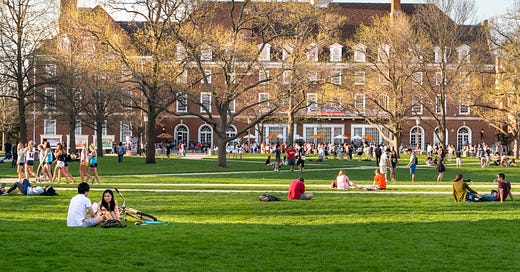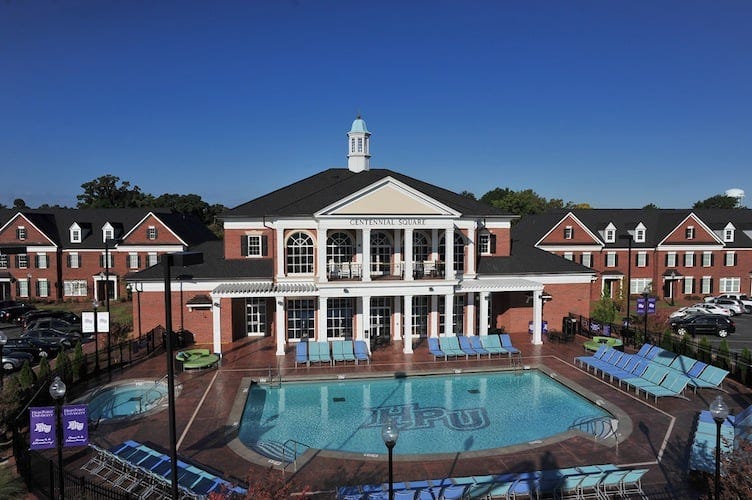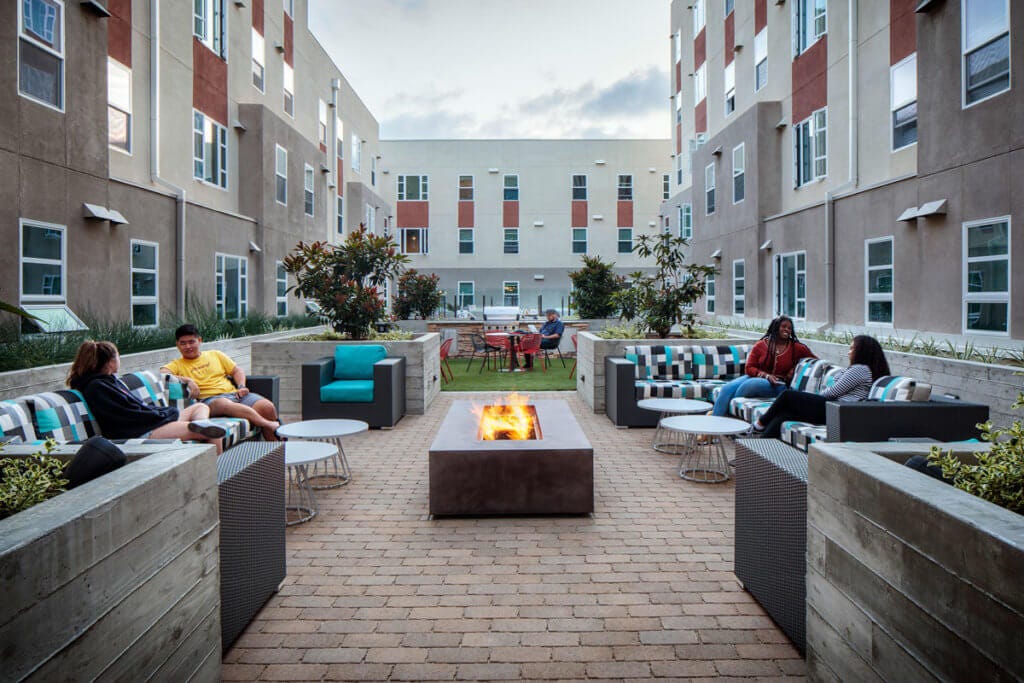In a previous article, I made the case that college is not the best option for most youths. In fact, I argue that too many youths are going to college. The result is that only about half actually graduate with a four-year degree, and many of them get a job in a field other than their degree.
Going to university makes a great deal of sense for youths in the Top 25% of intelligence and academic aptitude, particularly if they want to pursue a career in law, business, finance, engineering, or physical sciences. However few youths from working-class and lower-income families fit into that category. If they do, of course, they should have the opportunity to do so and compete as equals with those from higher-income families, but it should not be considered the default pathway to success.
The vast majority of the content that is taught in universities is simply not relevant for the vast majority of youths from working-class and lower-income families. And, yes, I used to be a professor so I know a little bit about the subject.
I do believe, however, that going to a four-year university is a viable goal for the Top 25% of intelligence and academic aptitude. We also need to make sure that all students have the opportunity to go to college regardless of their class background. Particularly for academically talented youths from working-class and lower-income families, the cost of college tuition has become a major barrier to their Upward Mobility.
I have already written that universities should make admissions decisions based on merit. In this series of articles, I will suggest ways that universities can dramatically cut the cost of tuition without damaging the quality of education.
The following is an excerpt from my second book Promoting Progress: A Radical New Agenda to Create Abundance for All. You can order e-books at a discounted price at my website, or you can purchase for full price on Amazon.
Other books in my “From Poverty to Progress” book series:
Making College Affordable
The four-year college degree has become the de facto entrance criteria into the American professional class. It is also the way that many young people learn valuable skills related to their future careers. For this reason, society has an interest in ensuring that public universities are effective, affordable, and fair.
America’s universities have a serious affordability problem. Tuition and other costs associated with getting a college degree have grown far faster than the overall rate of inflation. While college is supposed to be a means of elevating the talented regardless of their background, it often does the opposite.
Amenities
A big part of the problem is that universities have forgotten that their primary goal is to educate students. To compete against other universities in the Best Colleges rankings that come out every year, they have added more and more amenities, which have driven up the cost of tuition. Moreover, many of these amenities have become so enticing and time-consuming that they distract students from focusing on their studies.
Among the most important amenities are the buildings, landscaping, gyms, social activities, sports teams, dorms, and technology. Since all of these amenities can easily be compared visually during visits, universities have the incentive to look their best.
There are only three problems:
First, none of these amenities have anything to do with education.
Second, these amenities are expensive.
Third, these amenities distract students from focusing on their studies.
Ever-increasing spending on amenities is one of the main drivers in the inflation of college tuition fees. In the 2010-11 school year, colleges spent $499 billion. Less than 30% of that amount goes to instruction. Almost half of that spending went to non-instructional services, such as student services, public service and academic support. Every year, the percentage of spending that goes to education declines (National Center for Education Statistics).
Universities are becoming more and more like Club Med with books. And unfortunately, the Club Med side keeps growing in terms of both time and money, while the books side keeps shrinking in terms of time devoted (if not money).
If affluent parents want to send their children to a four-year resort with books, and they are willing to pay the entire bill themselves, that is fine. I do not think that it is good for society overall, but parents should be able to spend their money as they choose.
However, when bright working-class or poor students cannot attend college because those amenities have ramped up the cost of tuition to ridiculous levels, you are interfering with the societal good. We want the most academically talented from all classes to be able to go to college even if they happen to be born into families with average or below-average incomes.
It becomes even worse when taxpayers are expected to pick up the tab for those affluent youths to attend a four-year resort with books. Asking working class and poor families to pay the bill for talented youths to go to college is one thing, but when the bulk of the costs go on unnecessary amenities, that seems grossly unfair.
Unfortunately, financial aid only makes the problem worse. Government financial aid to students is much like “affordable housing.” It does not lower the cost, it just temporarily shifts the cost and feeds the cost-inflation cycle. Universities know that they can keep raising tuition because students will not pay the final tab. Governments will. Universities also fear that spending less on amenities will cause them to fall behind other universities in the prestige game.
Less Time In Studies
Not surprisingly, given all the money being devoted to college amenities, full-time students are spending less and less time on their studies. There are simply too many distractions.
Based on data from the Bureau of Labor Statistics Time Use Survey from 2003-2014, the average full-time student devotes only 2.76 hours per day to the classroom, research, and homework. This comes to 19.3 hours per week, basically a part-time job. Ironically, high school students devote 10 hours per week more to their academic work than much older college students (BLS).
In fairness to them, some of this time deficit is made up for in paid employment. Full-time college students work an average of 16.3 hours per week for a total of 35.6 hours on education and work. This number is deceptive, however, as 40% of full-time college students do not have any paid employment. The combined work effort of non-employed college students is much closer to part-time workers than full-time workers (BLS).
Most full-time college students do not take the full course load. They deliberately take a lighter course load and stretch the “college experience” to five or six years. This helps to maximize their free time during the process. The unfortunate result is that only 19% of students graduate from non-flagship universities within four years. And every year they take adds to the tuition cost, the debt load, and the lost wages. (Rosenbaum).
Given that full-time workers routinely work 40 hours per week, it is hard to see why non-employed college students spend less time on their studies than younger and presumably less mature high-school students.
Make Amenities Optional
Because the four-year college degree has become the de facto criteria for entrance into the American professional class, and virtually all of our future leaders will come from that class, society has a strong interest in reducing tuition costs.
We need to shift the incentive structure of universities toward making tuition more affordable. We can do so by allowing students and their parents to decide what level of amenities they are willing to pay for. Public universities and private universities that accept government funding should be required to separate tuition costs from other non-academic costs.
Currently, tuition and all the amenities that the “college experience” has to offer are lumped into one price. Students are forced to pay for the college experience regardless of whether they want to or not. Just as importantly, taxpayers are forced to do so as well. We need to give students and governments the option of paying for education only.
This may seem like a radical change, but it is not. Students already have the option of paying for on-campus housing and meals separately from their tuition bill. No one is forced to pay for the housing or meals of other students. Students and their parents can choose whether they want to pay for housing and meals based on their own personal circumstances. College amenities should be the same.
In practice this would mean that students could choose from a range of four different items on the college menu:
Tuition (required for all students)
Housing
Meals
Other amenities. Amenities may either be collected as user fees, annual fees per amenity, or as a lump sum covering all activities at the university’s discretion.
Tuition costs would only include the costs to pay for the:
Compensation package for professors, teacher’s assistants, and anyone whose sole job responsibility is teaching students or conducting academic research.
Construction, maintenance, and repair of buildings devoted exclusively to classrooms and student academic activities.
Classroom or student lab materials.
Federal and state financial aid or student loans should never pay for amenities, as they are expensive and in no way connected to students learning the valuable skills that societies need to pass on to their children.
State universities are funded partially by tuition fees and partially from direct government subsidies. I believe that direct government subsidies for education makes a great deal of sense. However, direct government subsidies for on-campus amenities has no clear societal good. At the very least, a separate budget for amenities would force state legislatures to discuss the appropriate level of taxpayer subsidies. My guess is that many would then choose education over amenities.
If students are given a choice as to whether they (or more likely their parents) are willing to pay for amenities, many will choose not to do so. The new payment system will also make it painfully clear how much of our current college tuition goes to non-academic amenities. Again, if affluent parents wanted to pay for those amenities out of their own pockets, they would be able to do so. But no one else would be forced to attend college.
Student Loans
As I write, President Biden has just signed an executive order canceling a substantial portion of student debt. Many supporters of this order claim that this is a means of countering college tuition inflation.
I believe that this measure will only make the inflation of college tuition worse, as it is telling universities that, no matter how high they raise tuition, the taxpayers will bail them out. When one takes into consideration the fact that a substantial percentage of the money goes to pay for non-academic activities for students from upper-income families, it is a particularly misguided policy.
My proposed payment system will also have a big impact on student loans. Student loans to pay for amenities look very different to both taxpayers and private financial firms than purely academic tuition. If private financial firms want to give what are effectively consumer loans to pay for amenities, they may do so. But the government should never subsidize this system, directly or indirectly.
Student loans to pay exclusively for tuition seem a far more legitimate candidate for taxpayer subsidy. In my next book in this series, Upward Mobility, I will go into more detail on how we can enable lower-income students to go to college. Here I will only say that taxpayers should never have to subsidize non-academic college activities.
I will continue this series on how to lower university tuition costs in future articles.
The above is an excerpt from my book Promoting Progress: A Radical New Agenda to Create Abundance for All. You can order e-books at a discounted price at my website, or you can purchase for full price on Amazon.
Other books in my “From Poverty to Progress” book series:














A very good read and very good ideas. Yes, college is ridiculously expensive.
Thought experiment… what if Universities had to co-sign on the student loans and the universities had to post their endowments as collateral? If the students graduate and don’t earn enough money from the college degree to pay off the debt in a reasonable period ( 5 or 10 years) then the University, not the taxpayer, would foot the bill.
Of course, most loans for all the amenities would probably disappear because, as you point out, they have nothing to do with education.
Spot on. At Risk & Progress, I have a deep dive on tuition inflation that I continually update where I discussed this.
While certainly not the sole driver, govt subsidized student loans have enabled unbelievable administrative an amenity bloat in our institutions of higher education.
Magoons plan, to exclude these amenities from loans, would help. I would go further and abolish the loans entirely, preferring income sharing agreements to properly align the incentives between schools, employers, and students.
Regardless, as a culture, we need to get more comfortable with the idea that not everyone needs a college degree.